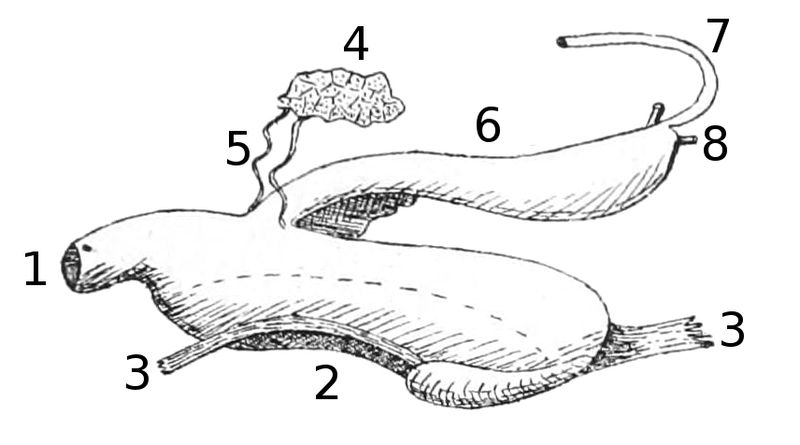Nutrition
Since not very much information is known specifically about the Patera leatherwoodi, a broader approach will be taken in examining its nutrition and feeding habits. Let us start with the nutritional habits of the P. leatherwoodi's class, the Gastropoda (Hickman et al., 2012).
Almost all Gastropoda are herbivores, meaning they eat plant material, including the P. leatherwoodi (Gillis, 2012). The main plant material that Gastropoda and the P. leatherwoodi eat is algae (Gillis, 2012). In order to eat this algae they must have a way of ingesting the food, digesting it, and getting rid of the wastes. First they must ingest the food through the buccal mass which includes the mouth and the pharynx (Wikipedia, 2012). The most important structure in the mouth is a radula (Wikipedia, 2012).
 As Hickman describes in Animal Diversity, all Gastropoda use a radula to obtain food.
A radula is a tongue like structure that has many teeth on it used
for scraping away material such as food (Hickman et al., 2012). The
radula is actually made up of two parts: the odontophore which is
the base for the teeth to attach and contains muscles to protract
and retract the radula and then the cuticula which contains the
chitinous teeth (zipcodezoo, 2012). Provided by zipcodezoo,
the picture to the right demonstrates how a radula works. As
the snail approaches the food, the radula starts to extend out.
Once the radula makes contact with the food, the teeth scrap it away
and up into its mouth (zipcodezoo, 2012). After the food
enters the mouth digestive enzymes are secreted from salivary glands
before entering the oesophagus (Wikipedia, 2012).
As Hickman describes in Animal Diversity, all Gastropoda use a radula to obtain food.
A radula is a tongue like structure that has many teeth on it used
for scraping away material such as food (Hickman et al., 2012). The
radula is actually made up of two parts: the odontophore which is
the base for the teeth to attach and contains muscles to protract
and retract the radula and then the cuticula which contains the
chitinous teeth (zipcodezoo, 2012). Provided by zipcodezoo,
the picture to the right demonstrates how a radula works. As
the snail approaches the food, the radula starts to extend out.
Once the radula makes contact with the food, the teeth scrap it away
and up into its mouth (zipcodezoo, 2012). After the food
enters the mouth digestive enzymes are secreted from salivary glands
before entering the oesophagus (Wikipedia, 2012).
The oesophagus carries the food to the stomach while digestive enzymes continue to be released (Wikipedia, 2012). The stomach is the main source of food digestion and after the majority of the food has been digested it enters the hepatopancreas (Wikipedia, 2012). In the hepatopancreas, digestive enzymes continue to be released but some of the food begins to be absorbed and stored (Wikipedia, 2012). From the Hepatopancreas the digested food goes into the intestine where absorption takes place (Wikipedia, 2012). After absorption takes place the waste products are then expelled through the anus which actually lies directly above the head due to the snails torsion (Wikipedia, 2012). Remember that torsion causes a 180 degree rotation of the snail's visceral and pallial organs (Hickman et al., 2012). The picture below demonstrates the digestive pathway of a snail.
 1-2:
Buccal mass
1-2:
Buccal mass
1: Mouth
2: Pharynx
3: Retractor muscles
4: Salivary Glands
5: Salivary Ducts
6: Oesophagus and Stomach
7: Intestine (which wraps around to the anus above the head)
8: Hepatic ducts
To learn about how Patera leatherwoodi performs Reproduction click here.
